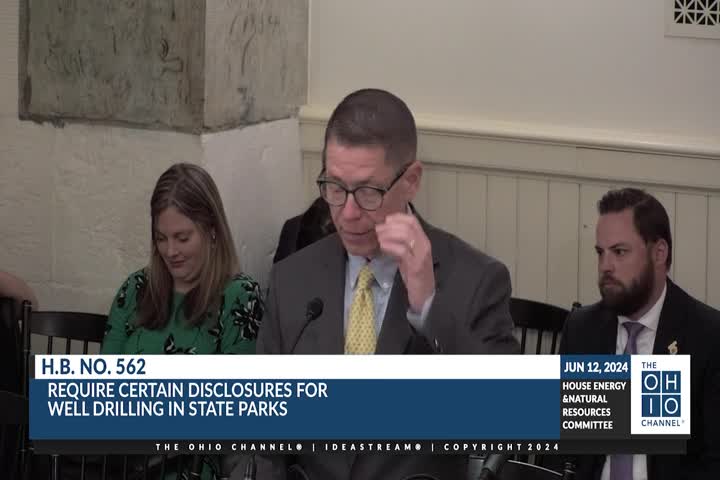Ohio pushes for fracking transparency to protect public health
June 12, 2024 | Energy and Natural Resources, House of Representatives, Committees, Legislative, Ohio

This article was created by AI summarizing key points discussed. AI makes mistakes, so for full details and context, please refer to the video of the full meeting. Please report any errors so we can fix them. Report an error »

In a recent government meeting, Ohio lawmakers discussed the implications of House Bill 562, which aims to enhance public safety and transparency regarding fracking operations in the state. This legislation follows the enactment of House Bill 507, which permits fracking in Ohio's public lands and state parks, a move that has raised concerns about environmental safety and public health.
The Energy Policy Act of 2005 delegates the regulation of fracking primarily to state governments, leaving a significant gap in federal oversight, particularly concerning the chemicals used in the fracking process. House Bill 562 seeks to address this gap by mandating that fracking well owners disclose the chemical components and trade names of all substances used during drilling and operation. This requirement is crucial for communities living near fracking sites, as it empowers residents with essential information about potential environmental risks.
Research from the University of Chicago indicates that states with chemical disclosure requirements experience lower pollution levels and fewer hazardous incidents related to fracking. In Ohio, over 1,400 fracking incidents were reported between 2018 and 2023, including gas releases, fires, and explosions, with 10% of these incidents classified as fires or explosions. Notably, Guernsey County, home to Salt Fork State Park, recorded 56 of these incidents, underscoring the urgent need for increased transparency and accountability in the fracking industry.
Supporters of House Bill 562 argue that the legislation will not hinder the fracking industry’s growth in Ohio but will instead foster safer practices and innovation. By requiring disclosure of chemicals, the bill aims to improve water quality and reduce pollutants in Ohio's water sources, while also building trust between the fracking industry and the public.
As Ohio continues to navigate the complexities of energy production and environmental protection, the discussions surrounding House Bill 562 highlight the critical balance between economic development and safeguarding public health and natural resources.
The Energy Policy Act of 2005 delegates the regulation of fracking primarily to state governments, leaving a significant gap in federal oversight, particularly concerning the chemicals used in the fracking process. House Bill 562 seeks to address this gap by mandating that fracking well owners disclose the chemical components and trade names of all substances used during drilling and operation. This requirement is crucial for communities living near fracking sites, as it empowers residents with essential information about potential environmental risks.
Research from the University of Chicago indicates that states with chemical disclosure requirements experience lower pollution levels and fewer hazardous incidents related to fracking. In Ohio, over 1,400 fracking incidents were reported between 2018 and 2023, including gas releases, fires, and explosions, with 10% of these incidents classified as fires or explosions. Notably, Guernsey County, home to Salt Fork State Park, recorded 56 of these incidents, underscoring the urgent need for increased transparency and accountability in the fracking industry.
Supporters of House Bill 562 argue that the legislation will not hinder the fracking industry’s growth in Ohio but will instead foster safer practices and innovation. By requiring disclosure of chemicals, the bill aims to improve water quality and reduce pollutants in Ohio's water sources, while also building trust between the fracking industry and the public.
As Ohio continues to navigate the complexities of energy production and environmental protection, the discussions surrounding House Bill 562 highlight the critical balance between economic development and safeguarding public health and natural resources.
View full meeting
This article is based on a recent meeting—watch the full video and explore the complete transcript for deeper insights into the discussion.
View full meeting
